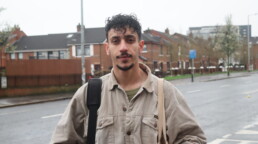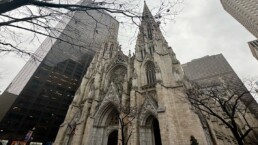Northern Ireland Granted Him Asylum: Now Comes the Hard Part
BELFAST, Northern Ireland — Yousif Alshewaili, a 24-year-old Muslim who fled his native Iraq (pictured above), was recently granted asylum status in Northern Ireland. He is thankful for the reception he has received in his new country but says that it often comes with strings attached.
“People are super nice,” he said in a recent interview, but they also want to convert him to Christianity. "Some grandmas volunteer to teach English also through Jesus," he said. They are constantly giving him Bibles.
"Like I had more Bibles than clothes, you know?" He chuckles as he recalls his early days there.
Alshewaili recounted an encounter where his reluctance to discard Bibles led to amusing exchanges. "One time I was asked by the hotel staff, 'Yousif, are you religious?'" he recalled. "I was like, 'No, it’s just that each time I go to the church, they give me a new Bible. I don't want to be rude or throw them away.'"
Christians form an overwhelming majority of the population of Northern Ireland. When people there speak of religious diversity, they mean Catholics and Protestants. Northern Ireland is still deeply divided, largely coming from the Troubles, an ethno-nationalist conflict that enhanced segregation between Catholics and Protestants and lasted for about 30 years from the 1960s to 1998.
Even today, the population predominantly identifies within these two groups. According to the 2021 census, 42% of the population identifies as Catholic, 30% as Protestant or other Christian denominations. Muslims like Alshewaili are a small minority. There are only about 12,000 Muslims in a country of just less than 2 million people, the census shows.
Despite efforts to foster inclusivity at the churches, religious undertones often remain — even in casual events.
"One of the churches that we go to after football, they offer us water and oranges and biscuits, coffee, you know, for free and they talk about Jesus," Alshewaili shared. "They invite us to come to the prayers and stuff."
During Ramadan, which ended this year on April 10, Alshewaili and his friends shared an iftar meal in South Belfast. This reunion for Ramadan was one of the few ways Alshewaili has managed to keep his roots and practice his religion — Islam — in a city that has made headlines for racism against religious minorities and for burning down places of worship for Muslims.
Alshewaili fled Iraq because of the Islamic State of Iraq and the Levant (ISIS) and fear of prosecution. Iraq had become intolerable, prompting him to leave the country. Since then, he has endured significant challenges in his life, including living in refugee camps in Greece and the UK. Despite these hardships, Alshewaili has managed to teach himself English and photography while living in a refugee camp in Lesbos, Greece, mastering both skills with remarkable proficiency.

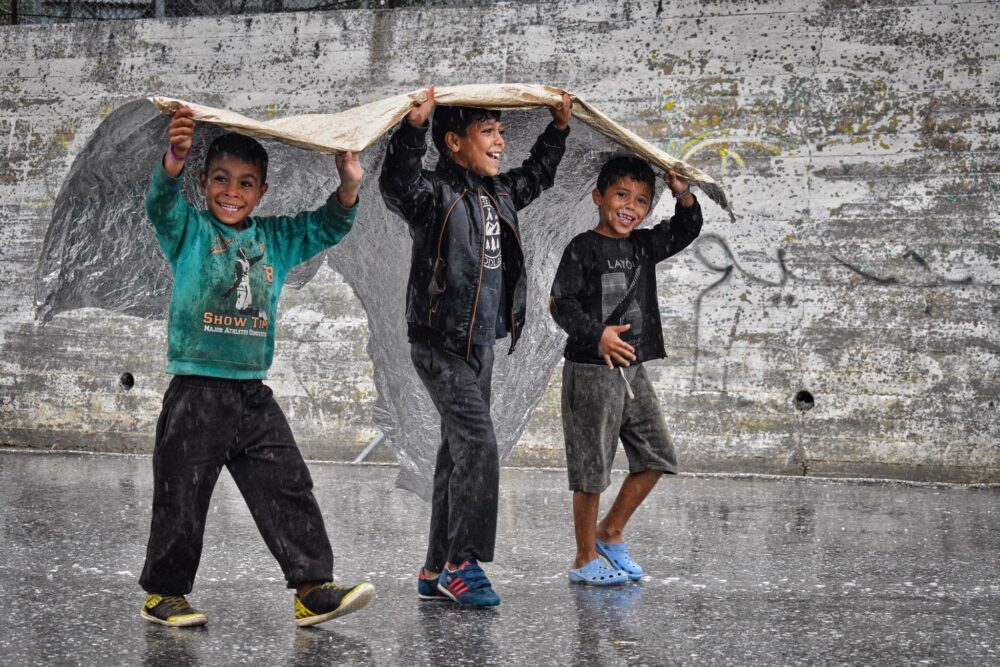
Now, he lives in Belfast, works as a photographer, and is slowly building a new life in Northern Ireland, a place he has called home for the past one and a half years. He was also recently accepted for a program in cybersecurity engineering at a university in Derry.
When I arrived one night of Ramadan to interview Alshewaili at his friend’s house, I was immediately greeted with food. His friend offered me dates, a sweet fruit from the Middle East, and grape juice while we waited for the main meal. We shared the meal with three of his friends, two from Yemen, and another from Iraq, whom he had met in Bangor, Northern Ireland, when he lived in a hotel hosting asylum seekers. They all cooked dinner together while chatting in Arabic, with Alshewaili translating the conversation for me.
When one of his friends offered me grape juice, I thanked him.
“We don’t say ‘thank you’ and ‘sorry’ in Arabic,” he told me. “Because everything you do, you expect to come back to you. If you do good, good comes.”
Upon arriving in Northern Ireland, Alshewaili felt welcomed. However, he also faced the restrictions of living in a hotel used to host asylum seekers, such as not being allowed to work while waiting for his documentation, being prohibited from cooking, being prevented from leaving the hotel on Fridays and receiving only £8.86 in weekly cash support — enough only for a one-way train trip to see his lawyer.
“It's just frustrating to seek asylum here because they don't allow you to work until you get your asylum. So you're basically living at the mercy of the government,” he said.
Constantly looking over his shoulder in Bangor, located a little less than an hour by train from Belfast, he lived in fear of potential attacks. The threat of violence loomed close, as many of his friends fell victim to street assaults in Bangor. Transitioning to Belfast offered a somewhat improved environment due to its larger size and more diverse population. However, even here, Alshewaili encountered troubling incidents. He recalls being followed while attending the gym, even to the changing rooms. One day, a staff member approached him, questioning his choice of footwear.
“At the end, she was like, ‘Look, if you don’t have trainers, we can donate. People donate them all the time for free,’” he said. “I was like. 'What do you mean? Why would you say that?' It’s racist. I came here to train, I pay for my membership. I have been a long-time member. So I don’t understand.”
“Peace walls” stand as stark reminders of the division between Catholic and Protestant neighborhoods in Northern Ireland. Some of these walls soar over 40 feet high, stretching approximately 21 miles (or 34 kilometers) in length. Initially erected during the Troubles to mitigate the risk of petrol bombs and missiles, these barriers are now more used for psychological security to both communities. To this day, many on the Protestant side identify strongly with the United Kingdom and British identity, while several members of the Catholic community align with Irish heritage.
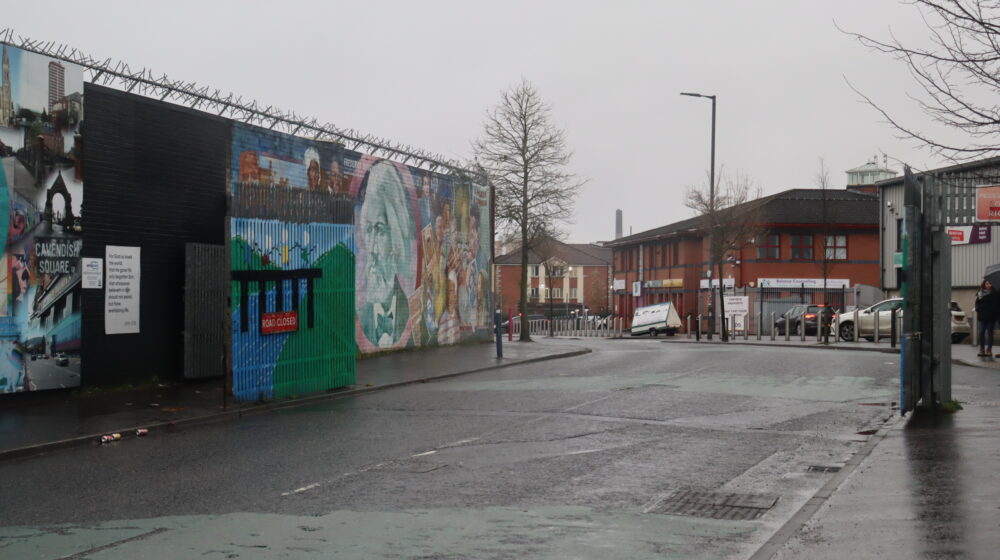
Upon his arrival, Alshewaili was initially optimistic, believing that the people of Northern Ireland would empathize with his refugee past. “I thought I shared a lot of things in common with these people. They will understand me because they went through it all, so they will understand why I am here,” he expressed. “But unfortunately, only one side of the wall understands; the other side has been racist. Not everyone, but a lot.”
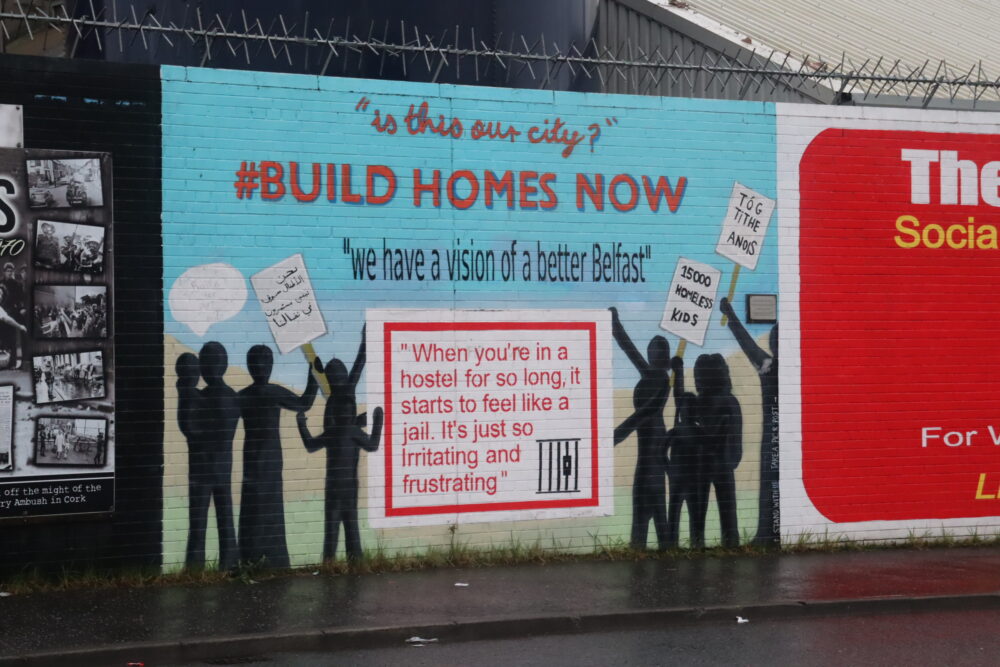
I asked Alshewaili to spend a day showing me Belfast from his perspective. As we navigated the city streets, the disparity between the communities became evident. While strolling through South and East Belfast, we observed strong loyalist sentiments depicted in murals.
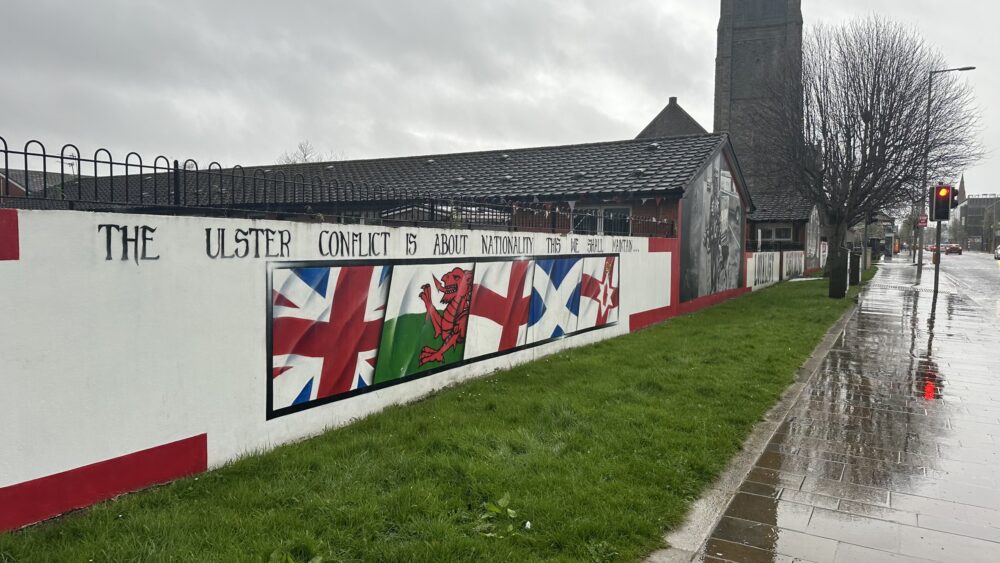
We also passed areas where Arab businesses were burned down in allegedly racially motivated incidents. However, upon turning onto Northumberland Street and passing through the gates that segregate Protestant and Catholic areas, we noticed a palpable shift in the atmosphere, with signs welcoming immigrants and an Irish sentiment.
“One side is way more welcoming, way more nice,” he said. “Those who cared for refugees, most of them were from the Irish side of the wall. They were trying to fix the situation and organize a protest against this system. They tried to support us in any possible way.”
In 2021, the Belfast Multi-Cultural Association (BMCA) building, situated in South Belfast, a mainly Protestant Loyalist area, was destroyed by arson. BMCA is an association that fosters cultural diversity and community services such as a food bank and prayer area. The crime was believed to be motivated by hate, according to police reports. Just hours after repairs were completed in 2022, the building suffered another arson attack, further reinforcing suspicions of a hate crime. Faced with ongoing safety concerns, the BMCA decided to relocate to a different site in February 2023. Naomi Green of the Belfast Islamic Centre explained that BMCA has moved to another building in a more mixed area which is considered safer, and where a previous mosque was located for over 40 years without problem.
“For the previous area, I wouldn't consider it a safe area for Muslims in particular, or people who may be 'coded' as Muslims — Arabs, South East Asians or African,” Green said. “No one was charged for most of the attacks in those areas.”
Despite these obstacles, Alshewaili acknowledged recent progress with advocacy for the creation of multicultural groups. "You know, it's getting better," he said. "Lots of people working on it and speaking on it."
During his time in Bangor, Alshewaili believes he experienced his worst period yet. The region witnessed a surge of protests against immigrants residing in hotels, with demonstrators accusing them of various crimes and expressing discontent over government expenditure.
“Some people held different kinds of signs,” he said. “Signs accusing us of rape, theft, blaming the government for spending millions on us and labeling us as criminals, among other accusations.”
One notable example is the Facebook group "North Down Concerned Residents," which attracted about 2,500 followers and serves as a platform for local opposition against refugees and asylum seekers. The group organizes protests outside hotels and voices grievances regarding the immigrant population in Northern Ireland.
Alshewaili perceived a deliberate attempt by the government to scapegoat refugees for economic woes. With private hotels housing immigrants paid for by the government, a large part of the Northern Ireland population is unsatisfied with the arrangement.
“The government is using refugees as scapegoats, telling them that the economy is bad because of refugees,” he said. “The asylum system in the UK is for profit. So they are profiting from me.”
A prior BBC investigation revealed that private companies are experiencing growing profits while the government spends millions of pounds daily to accommodate asylum seekers in the UK.
“Reducing the backlog in asylum cases and establishing a more efficient and robust decision-making system is not a strategy in and of itself to stop illegal migration but is important to taxpayer value and we have prioritised it,” said Minister for Immigration, Robert Jenrick, in a statement to the House of Commons on illegal migration.
There exists a suspicion that paramilitary groups may be orchestrating attacks against immigrants in Bangor. On one occasion, Alshewaili said the police had video footage of an incident but still did not get involved.
“We made two complaints about racism and racist attacks,” Alshewaili said. “They closed the investigation after two days only and told my friend that they could not identify the people. It is Bangor, it is not big. The police cannot act against the paramilitary.”
Alshewaili maintains that many of the tensions between the two communities could be alleviated through improved housing policies. “I would put more housing in Belfast for both communities,” he asserted. “Let everyone live with dignity.”
May the Peace Be With You
NEW YORK — “La Paz sea contigo.” This phrase, La Paz sea contigo, means “may the Peace be with you,” and may have been the only time the churchgoers at St. Patrick's Cathedral in New York City interacted with each other on a recent Sunday.
With a capacity for approximately 2,400 people, the cathedral attracts more than 5.5 million visitors annually, making it one of New York’s major religious tourist attractions. During Sunday masses, which are considered the Lord's Day for the Catholic Church, St. Patrick’s Cathedral hosts eight services, including one in Spanish at 4:00 pm. In between masses, the church welcomes tourists to explore its design and tradition.
This means that the time in between masses is extremely short. The church also has extra security personnel who ask churchgoers to show the interior of their bags before entering the seating area for mass. As a result, the parishioners at the cathedral do not have any time to interact with each other — until the passing of peace.
The ritual happens during communion, which encompasses the prayers for peace and the communion itself. The greetings happen after the Prayer for Peace, and before the communion, where the priest asks that peace extends to all people, present or not, so that they can fully live the mystery of Christ. At that moment, people can share their wishes for peace with one another.
It is also the moment to observe the vast difference between those who frequent church. We see families hugging one another, toddlers who take the opportunity to finally run around and talk with each other, and those who come in solitude talking to their neighbors. It is the moment people step out of their own prayers to extend their votes of peace to the community.
“La Paz sea contigo,” are the wishes shared among the faithful, who shake each other’s hand - except a man with glasses who did not shake anyone’s hand and, instead, held up the two-finger peace sign in response to the greetings.
Growing up Catholic, I had already been to many masses in different churches around the world. Most of the time, I tend to prefer more charismatic churches that promote interaction between churchgoers. However, the solitude of St. Patrick’s promotes a more introspective and direct connection with the ceremony. Sylvia Rivas, Assistant to the Exec. Director of Development, said most people who attend mass at St. Patrick’s Cathedral seek solace and prayer.
This elevates the prayers for peace, turning them into a more cherished and extended experience compared to other churches. I was taken aback by the significant number of parishioners at St. Patrick’s Cathedral who were praying alone, particularly noteworthy considering that Hispanic masses typically bring large families together. Observing young women in their twenties, older women with veils, and solitary men reaching out to say "La Paz sea contigo" adds an intimate and meaningful dimension to the moment, creating a sense of mutual understanding.
St. Patrick's Cathedral is in the Midtown Manhattan district of New York City and serves as the principal church for the Archbishop of New York. The cathedral stands directly across from Rockefeller Center.
Back in the 5th century, Saint Patrick undertook his mission in a predominantly pagan Ireland. His efforts to evangelize led to a significant portion of Ireland's population embracing Christianity, according to the cathedral’s website. The Catholic faith has remained a resilient force in Ireland ever since, especially in the southern part of the country. His legacy remains alive, represented by the large New York City cathedral.
St. Patrick's Cathedral, designed by James Renwick Jr., is the most extensive Gothic Revival Catholic cathedral in North America, according to the Cathedral's website.
Day Five: Northern Ireland's Journey Towards Peace and the Bloody Sunday Legacy
LONDONDERRY – Today, our class began exploring tumultuous divisiveness and violence in Londonderry's recent history — and ended with an uplifting message of unity and friendship across religious divides.
After breakfast at the Maldron Hotel, we followed Northern Ireland guide, Dr. Barbara McDade, into the Bogside to learn more about the somber echoes of past conflict and the resilience of its people.
Our first stop of the day was The Museum of Free Derry. Walking down a slope into the Bogside neighborhood, we immediately noticed political posters and slogans in every direction. The streets were filled with flags from nations with which locals identify, including Palestine, Basque, Catalonia and Bosnia. Murals paid tribute to the innocent lives lost during Bloody Sunday when British soldiers shot 26 unarmed civilians during a protest march in the Bogside. There were also posters opposing the Good Friday Agreement and supporting the 32 County Sovereignty Movement, a political movement that is against the British rule of Northern Ireland.
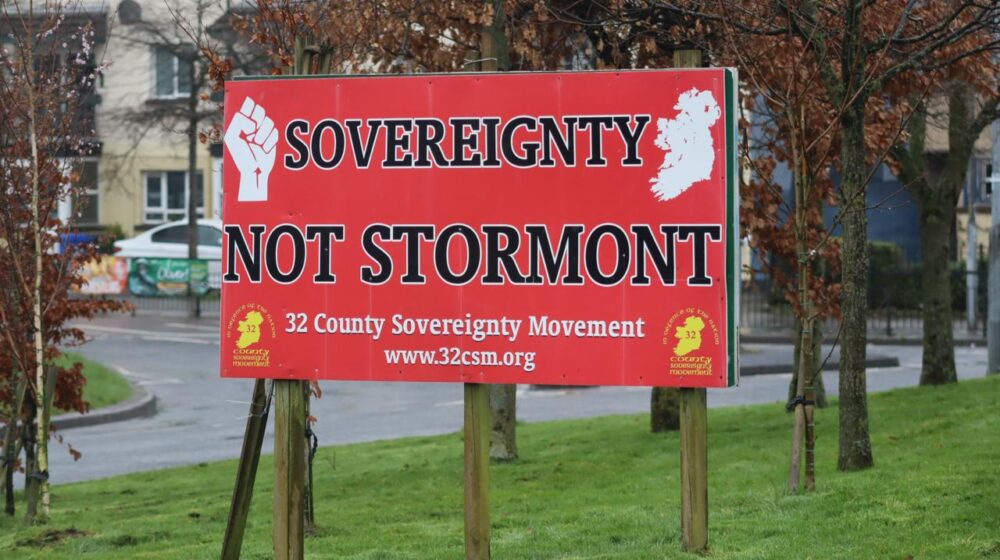
McDade explained that members of the group ask “What are the 30 years of war if you still accept the control of the British over Northern Ireland?” in opposition to the Good Friday Agreement, which ended most of the conflicts of the Troubles, an ethno-nationalist conflict that segregated the population between Catholics and Protestants.
But the prospect of a united Ireland still seems distant, McDade explained. Despite nationalist sentiments, economic and trade opportunities and benefits like universal healthcare often dictate voting behavior.
After seeing the influence of the conflicts in the streets of the Bogside, we reached The Museum of Free Derry, which opened in 2007 to memorialize the events that occurred in the city known as ‘Free Derry’ from 1968 to 1972. This era encompasses the civil rights movement, the Battle of the Bogside, Internment, Bloody Sunday and Operation Motorman. Located in the middle of the Bloody Sunday conflict zone, it was right outside the museum that British officers wounded three men and killed two others.
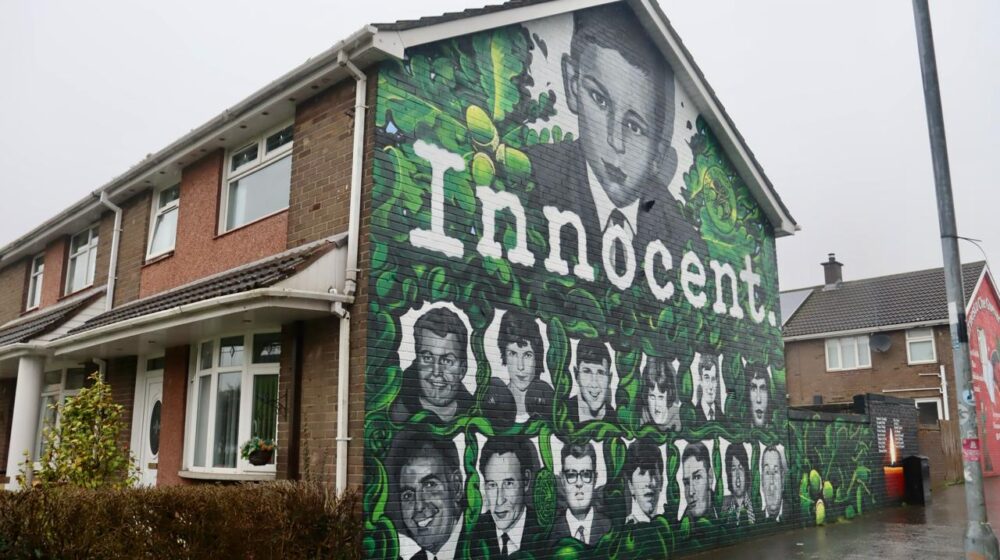
The visit to the museum had a personal touch with the family history of the museum guide. Our guide, Eoin Yates, 30, wasn’t yet born on Bloody Sunday but has a personal connection — his great uncle, Patrick O’Donnell, was wounded after throwing himself across a woman to shield her from gunfire.
Yates explained other tactics employed by the authorities during the conflict, such as adding glass to rubber bullets to maximize harm. He described the contemporary relevance of these historical events, showing the parallels of modern instances of injustice. "‘Bloody Sunday’ is something that happens around the world,” he said.
Yates also shared that many visitors, particularly those from Britain, don’t know about the events that led to Bloody Sunday until they visit the museum.
In the years following the atrocities, the struggle for justice and recognition of Bloody Sunday continues. Yates discussed the ongoing legal proceedings against Soldier F, a former British soldier on trial for two murders and five attempted murders. Yates also criticized recent legislative efforts that seem to undermine the quest for accountability.
The Museum of Free Derry is not just a memorial, but also a means of engaging with global patterns of state aggression. Yates believes in the power of shared experiences to foster understanding and solidarity. "If we can use that experience to help others, then that’s what we have to do," he said.
After the museum, our class dispersed for several hours of reporting time.
Ellie Davis, Katelin Moody and Emma Paidra visited Oakgrove Integrated College to learn more about integrated schools in Northern Ireland, which attempt to bring together children from both sides of the primary religious divide in Northern Ireland — Catholics and Protestants. They explored why the schools are still such a small segment compared to maintained (Catholic) and controlled (Protestant) schools.
Indy Scholtens interviewed Susan Gibson of Derry Well Woman about the Legacy Act. They talked about Gibson growing up in Derry during the Troubles. She founded Derry Well Woman because she believes that women suffer most often from conflicts yet don’t receive any special care.
Refael Kubersky, meanwhile, traveled back to Dublin to report at a mosque — he will meet up with our group in Belfast tomorrow.
As we mentioned before, stay tuned to read these pieces in the coming weeks.
Later, at 6:00 p.m., we gathered for dinner, joined by guests Bishop Andrew Forester from the Church of Ireland, Bishop Donal McKeown of the Catholic Church, Rev. Gordy McCracken from the Presbyterian Church, and Rev. Stephen Skuce of the Methodist Church. Surrounded by green and gold banners in preparation for St. Patrick’s Day, we learned about their journeys to faith and their initial interactions with Christians from other denominations. Overall, there was a shared optimism regarding the efforts of various churches to foster peace in Northern Ireland.
Edited by Trisha Mukherjee

